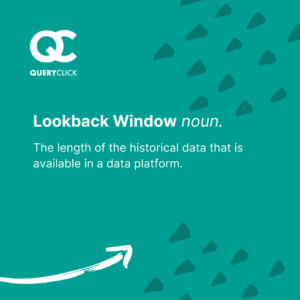5 Things You Need from Your Attribution Solution That Google Analytics Can’t Do

It seems that since the dawn of time, Google Analytics has been a staple part of a marketer’s tool kit. Ask a marketer what they’re using for attribution and you can bet their answer will be Google Analytics (or nothing!).
But marketing strategies have had to evolve over the years to keep up-to-date with customer trends, the modern buying journey, and new digital channels that have quickly become permanent members of the marketing mix.
So, why haven’t marketers taken this approach with their attribution too?
The amount of data available now means marketers need a more sophisticated approach to attribution that can provide invaluable insight and a granular level of detail to really understand what is – and more importantly what isn’t – driving growth for the business.
Let’s look at some vital features you need from your attribution solution that Google Analytics just can’t do…
1. Track individual users
All marketers know the key to success is being able to place the right offer in front of the right customer in the right time and place. So, having as much data as possible about an individual is crucial to gaining a better understanding of a user’s behaviour across different channels and campaigns.
Google Analytics is a session-based platform, which means it’s great at tracking a user during a single session – i.e. where they came from, what they did once they arrived, and where they exited. But what it can’t do is track multi-session visits.
That’s because they require access to a user’s tracking cookies. If a user regularly clears their cookies then they’ll be repeatedly logged as a new session rather than one long session stitched together. The same problem arises when users search the web using any one of the browsers that don’t support third-party cookies (like Safari). This will be an even bigger problem when Chrome phases out third-party cookies in 2022.
[How can marketers prepare for a third-party cookie free world? Find out today]
2. Unbundle data from social networks
Social networks and their paid ads service have become a key part of many growth strategies. But “off-the-shelf” attribution solutions, like Google Analytics, have a hard time getting access to the data from these channels.
Social networks operate in “walled gardens” – meaning that the data held by the likes of Facebook and Twitter is siloed off from other analytics platforms. This often results in flawed data reports that prevent you from getting a real understanding of the value of your Paid Social channels.
As marketers spend more on these platforms they understand less about their customers, as walled garden campaigns and interactions can’t be tied back to the brand’s CRM database. This leaves you with an incomplete view of your customers and how they’ve interacted with your marketing touchpoints across various platforms.

Marketers need an attribution solution that can manage first-party audience data while simultaneously integrating with third-party providers. Tracking all customer interactions across numerous platforms is important for building a clear picture of the customer journey.
3. Process historical data
If your lookback window doesn’t cover your entire sales cycle, you could miss out on key data in your customer journey analysis. And without accurate data and an understanding of historical trends, your marketing strategy can’t be effective.
Currently, Google Analytics only offer a 90-day lookback window. So, if you started tracking your site in January 2020 but wanted to see the impact your Christmas campaign in 2018 had… you can forget it.
If you want to truly understand the relationship between your marketing channels and your revenue, you need an analytics provider that can give you a holistic view.

4. Show you the why behind a user’s behaviour
Google Analytics is great for giving you the beginning and end of a story (we all know about their dreaded reliance on Last Click). But the middle – the bit that’s really important for understanding the buying journey – gets a little lost in the mix.
Understanding the why behind a user’s action is the most valuable piece of information for a marketer. If you know this then you can adjust your marketing strategy to include the channels and campaigns most likely to lead up to a conversion.
To do this, your attribution solution needs to combine tracking an individual customer across multiple sessions with the ability to consider every customer engagement in that journey. As heuristic models like Last Click and First Click (as used by GA and Adobe) completely disregard all but one engagement point, they can’t give you this insight. Linear models simply score every engagement point equally, which still isn’t fit for purpose.
The only way to see the real impact of each individual engagement is to consider them individually, using an attribution model that logically derives how valuable each one was to a conversion. Conversion revenue must then be shared across each of those touchpoints, giving you a much more accurate view of their returns.
With this system in place, you can not only see how your different marketing channels are working together – you can also identify which ones are re-engaging customers verses the ones pushing them away. This allows you to optimise your activity at every level to reduce wasted spend and increase return-on-investment (ROI).
5. Fix your data for accurate attribution
Choosing the right attribution model is only the first step. Of equal importance is ensuring the quality of the data you feed into it. The challenge is that most of our core marketing data (up to 80%) is fundamentally flawed thanks to serious shortcomings with the process of collecting and analysing it.
To put it simply, inaccurate data in = inaccurate results out. And it’s on these results that marketers are basing important decisions around spend.
“Off-the-shelf” attribution solutions like Google Analytics are applying already limited attribution models to this low-quality data, further compromising the reliability of their results. They do nothing to fix the widely acknowledged flaws with this underlying data, leaving up to 90% of marketers too afraid to invest in activities with long-term payback because of their inability to prove any value.
How Corvidae Shapes Up Against the Rest
Introducing Corvidae – our in-house attribution solution that completely rebuilds your core data to achieve new levels of digital marketing performance.
At QueryClick, we have 12 years’ experience providing professional digital marketing services to large enterprise businesses such as Aggreko, BT and Tesco so we know what marketers look for from their analytics data.
So, we developed Corvidae, our unique attribution tool, to solve the inaccuracies caused by oversimplified attribution models and poorly connected data. Corvidae allows you to accurately attribute value and radically improve your marketing performance. See how it compares to the rest, including GA360, below and click here to schedule a call with one of our experts.

Own your marketing data & simplify your tech stack.
Have you read?
Chrome’s announcement on dropping cookie opt-in last month closed the door on a 5 year saga for marketers. But what is the landscape like in 2025 for cookie-based measurement?
Generative AI is transforming the way that marketers plan and assemble content for their Paid Ads. As big platforms like Google, Meta and TikTok increasingly build the tools needed to...
In a surprising move that has sparked heated debate, Mark Zuckerberg announced on his Instagram that Meta will be reducing its levels of censorship and in particular fact-checking on its...



